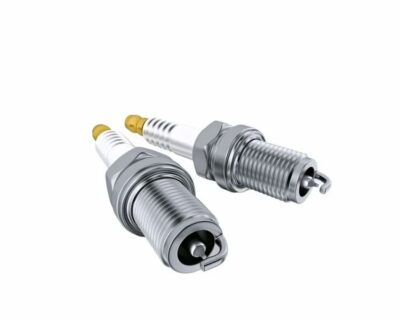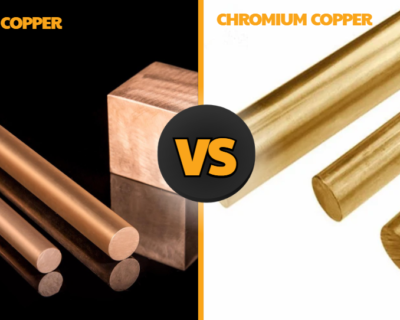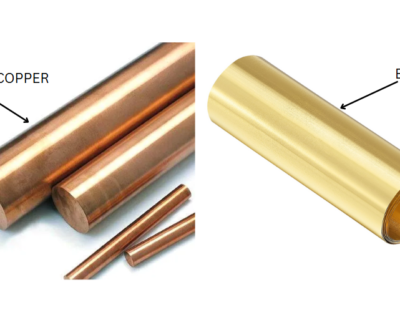Blogs
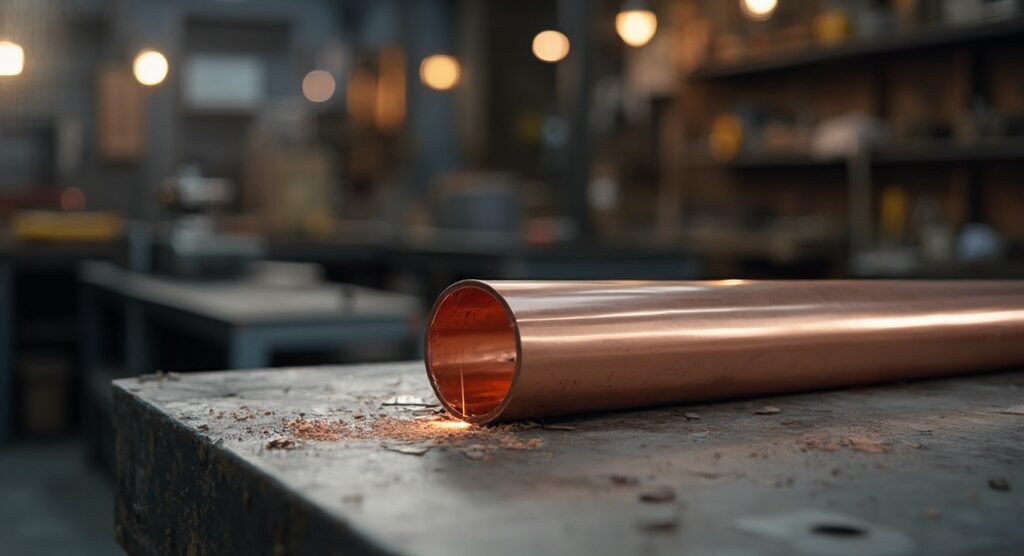
Understanding Beryllium Copper Round Bar: An In-Depth Tutorial on Properties and Uses
Introduction
In the competitive landscape of industrial materials, beryllium copper emerges as a standout alloy, prized for its unique combination of strength, conductivity, and durability. This versatile material not only meets but often exceeds the stringent requirements of various sectors, including aerospace, automotive, and electronics.
As industries increasingly rely on advanced materials to enhance performance and safety, understanding the intrinsic properties and applications of beryllium copper becomes crucial for procurement managers seeking reliable solutions. From its impressive tensile strength and excellent electrical conductivity to its resistance to corrosion and fatigue, beryllium copper is positioned to play a pivotal role in shaping the future of manufacturing and technology.
This article delves into the key properties, applications, and emerging trends surrounding beryllium copper, providing insights that are essential for informed decision-making in today’s dynamic market.
Key Properties of Beryllium Copper: Strength, Conductivity, and Durability
This alloy stands out in the realm of mixtures due to its remarkable combination of characteristics, making it a favored option for various industrial uses. DOMADIA Beryllium Copper products comply with international standards UNS and ASTM, ensuring quality and reliability. Our commitment to quality and customer satisfaction drives us to provide tailored solutions to meet your specific needs.
The key properties include:
Strength: This alloy can achieve tensile strengths exceeding 200,000 psi (approximately 1,379 MPa), establishing it as one of the strongest metal alloys available. According to expert Tom Chandler, the ultimate tensile strength (UTS) for TH04 tempered rod is closer to 200 KSI, significantly higher than previously noted values.
Additionally, Alloy 190 offers tensile strength up to 190 ksi (1310 MPa), providing a comparative perspective on the strength of beryllium copper.Electrical Conductivity: Beryllium copper maintains excellent electrical conductivity, reaching about 70% of pure copper’s performance. This characteristic is vital for its use in electrical and electronic fields, where efficient conduction is paramount.
Corrosion Resistance: The alloy is recognized for its admirable resistance to corrosion, making it appropriate for use in harsh environments where other metals may fail.
Fatigue Resilience: This alloy demonstrates exceptional fatigue resilience, enabling it to withstand repeated stress cycles without failure. This durability is crucial for components operating under demanding conditions, ensuring longevity and reliability.
Machinability: The alloy’s machinability is another significant advantage, as it can be precisely machined to tight tolerances. This capability enables the production of intricate parts that retain their structural integrity across various operational challenges.
Real-World Uses: A practical instance of a specific alloy’s use is emphasized in the case study of overseeing polymerization reactions with ACOMP.
The ACOMP offers automatic, continuous online observation of polymerization reactions, improving the efficiency and management of these processes in industrial applications.
These attributes collectively highlight DOMADIA’s leadership in supplying high-performance Copper Plates designed to fulfill industrial requirements. Our strength, conductivity, and corrosion resistance render the beryllium copper round bar essential for aerospace and precision uses. For further inquiries or detailed specifications, please fill out the contact form, providing your name, company, title, phone, email, and market selection.
We are here to support you with expert guidance and customized solutions.
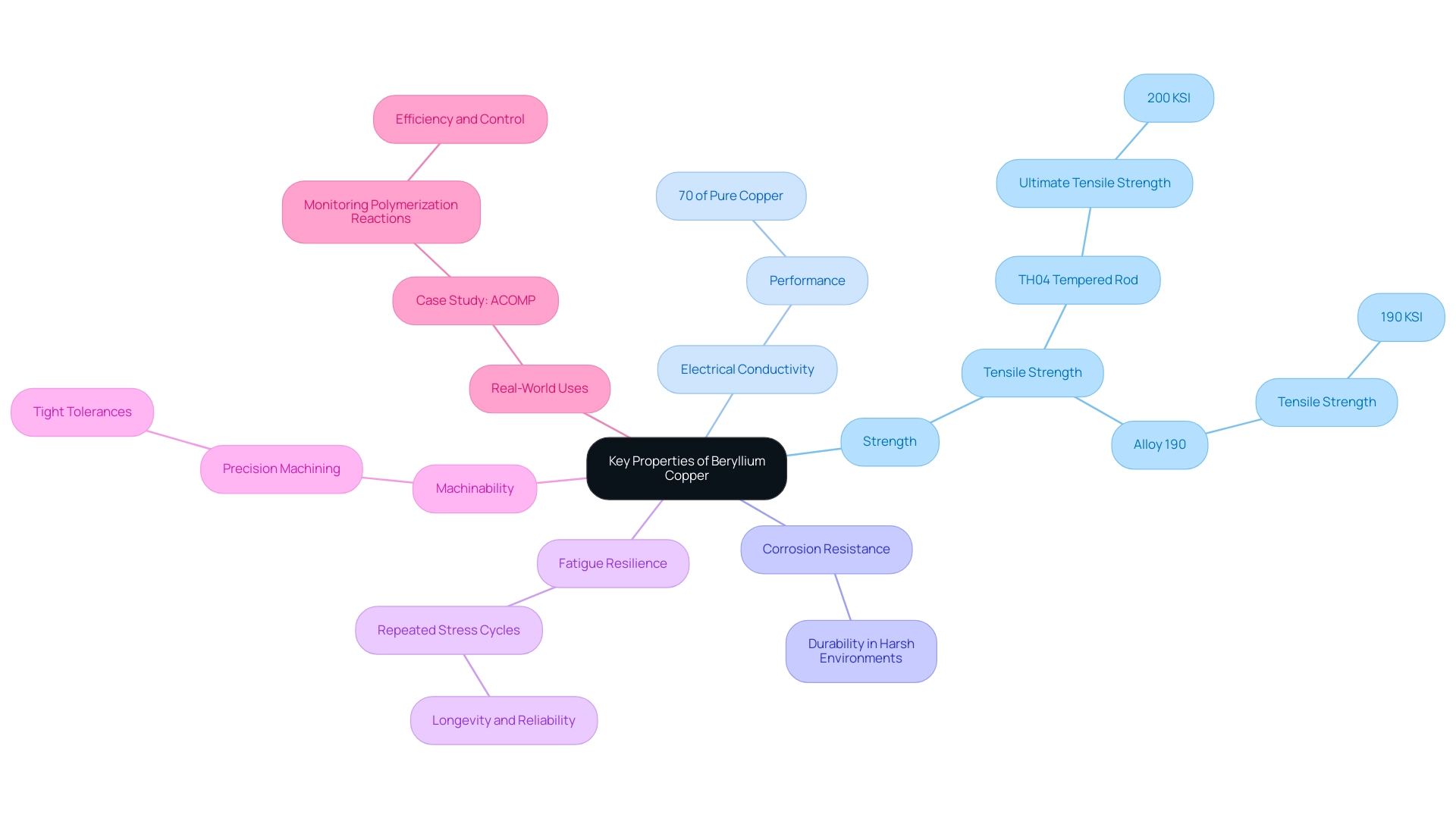
Applications of Beryllium Copper Round Bars in Industry
Copper round bars are indispensable in various industries, thanks to their remarkable properties, including high strength, excellent electrical conductivity, and superior corrosion resistance. The main uses of Copper Alloy in 2024 include:
- Electrical Connectors: Renowned for its excellent conductivity and mechanical strength, a specific type of copper is extensively utilized in electrical connectors and terminals, ensuring reliable performance in critical electrical applications. Recent studies indicate a strong positive correlation between copper and beryllium, which enhances their electrical conductivity and hardness.
- Aerospace Components: The high strength-to-weight ratio of copper-beryllium alloy makes it an ideal choice for aerospace components. Its ultimate tensile strength reaches up to 1247.10 MPa for Cluster 2, making it capable of withstanding extreme conditions while maintaining structural integrity—crucial in this sector where performance and reliability are non-negotiable.
- Automotive Parts: In the automotive industry, Copper Bezel is utilized in components such as switch contacts, sensor housings, and valve springs. These tools benefit from the material’s durability and efficiency, contributing to the overall performance of automotive systems.
- Molds and Dies: Its superior thermal conductivity allows for effective heat dissipation in molds and dies used in manufacturing processes. This property enhances production efficiency by reducing cycle times and improving product quality.
- Industrial Equipment: Components machined from beryllium copper round bar are widely used in industrial equipment, including pumps and valves. The resistance to wear and corrosion of the beryllium copper round bar is vital for maintaining operational efficiency in demanding environments. Significantly, non-sparking tools crafted from Copper Alloy are crucial for tasks in explosive settings, rendering them the optimal choice for non-sparking uses and greatly improving safety during operations.
- Military Uses: The strength and resilience of Copper Berry under extreme conditions render it suitable for military uses, where reliability and performance are paramount. This versatility underscores the material’s critical role in both advanced and everyday technologies.
In the context of industry developments, Mihail Kolev highlights the significance of predictive modeling in understanding material properties, stating,
Predictive Modeling and Analysis of Cu–Be Alloys: Insights into Material Properties and Performance.
Such expert insights further affirm the growing reliance on Copper in high-stakes applications, particularly in aerospace and automotive sectors. Additionally, Madl et al. argue that short-term upper-bound exposure estimates may better capture the exposure levels leading to sensitization and disease, which is an important consideration for procurement managers assessing safety and compliance. Domadia’s commitment to providing customized Copper plates, along with expert support, is evident in our testimonials:
‘Domadia’s Copper plates have met our stringent quality standards and have been crucial for our project’s success.’
This ensures that procurement managers can confidently select materials that meet stringent safety standards.
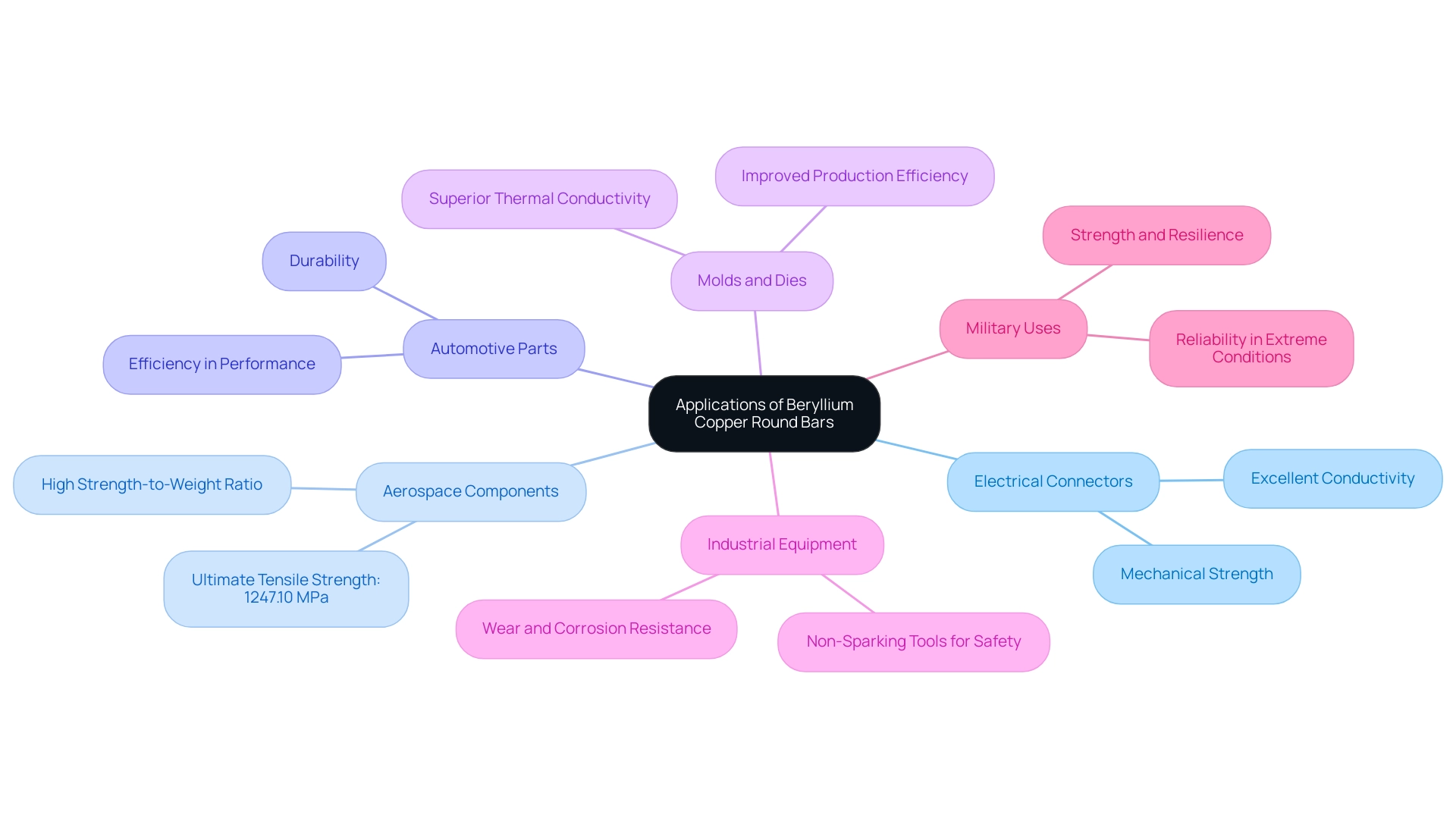
Comparison with Other Copper Alloys
When comparing a specific alloy with other metal mixtures, such as brass and bronze, several critical distinctions are evident:
- Strength: The beryllium copper round bar is significantly stronger than both brass and bronze, making it the preferred choice for applications that require exceptional tensile strength. This strength is particularly beneficial in industries where durability and reliability are paramount. The extrusion of alloys occurs under high pressure, ranging from 45,000 to 200,000 p.s.i., which highlights its manufacturing capabilities and strength.
- Electrical Conductivity: While brass is known for its good conductivity, a specific alloy excels in this regard, providing superior performance for electrical applications. The conductivity of C17510 alloys is crucial for their application in power and signal cables, where efficiency is essential.
- Corrosion Resistance: The beryllium copper round bar demonstrates improved corrosion resistance compared to brass, which can degrade under specific conditions. This characteristic makes this alloy preferable in harsh environments, including those involving exposure to moisture or chemicals.
- Cost Considerations: The distinct characteristics of a specific alloy lead to a greater expense compared to brass, which may restrict its utilization in budget-conscious projects. However, its performance advantages often justify the investment in high-demand scenarios.
- Machinability: The beryllium copper round bar provides superior machinability compared to various bronze alloys, facilitating more precise manufacturing processes. This ease of machining enhances production efficiency and accuracy, critical in industries requiring stringent tolerances.
- Applications: Each alloy serves distinct purposes; for instance, brass is commonly utilized in decorative uses due to its aesthetic appeal, whereas a certain alloy is favored in high-performance environments, particularly where non-sparking properties are needed. Non-sparking tools, crafted from a special alloy, are vital in settings where the danger of ignition exists, highlighting their crucial safety characteristics. These tools not only prevent sparks but also maintain structural integrity under high-stress conditions, making them indispensable in industries such as oil and gas, mining, and chemical processing.
Recent studies, including those by Monzen et al., have further explored these alloy properties, reinforcing the advantages of a specific metal alloy over its counterparts. For example, Monzen et al. studied precipitation processes in a Cu-0.9 mass% Be single crystal, providing valuable insights into the material’s performance characteristics. Furthermore, as highlighted by Z.W., the density of the γ’ phase in the C17200 alloy is higher, while the amounts of the brittle β phase are lower than those of the QBe2.0 alloy, further emphasizing the superior characteristics of this metal alloy.
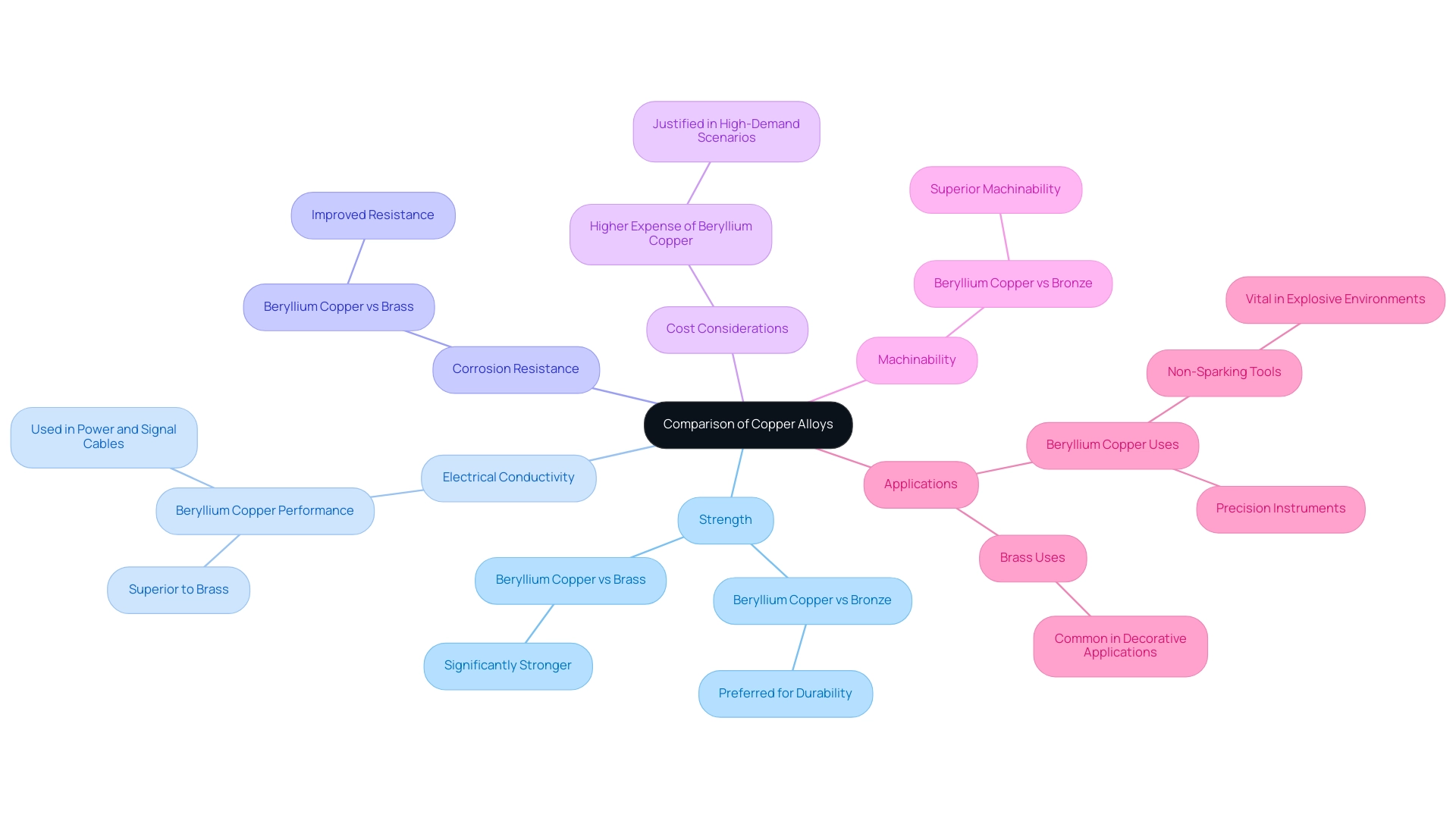
Safety and Handling Considerations
The alloy is famous for its high-performance traits, yet it requires careful handling because of the health hazards linked to exposure to dust and fumes. In explosive environments, the use of Non-Sparking Tools, such as Beryllium Copper wrenches, is critical for ensuring safety and compliance. To further ensure the safety of personnel and adherence to health regulations, the following protocols should be strictly observed:
Personal Protective Equipment (PPE): Utilizing appropriate PPE, such as gloves, masks, and protective eyewear, is critical when machining or handling copper. This equipment significantly minimizes exposure risks associated with airborne particulates, especially in environments where non-sparking tools are required.
Ventilation: Adequate ventilation is essential in workspaces to effectively disperse dust and fumes produced during machining activities. Enhanced airflow not only aids in maintaining air quality but also reduces the likelihood of inhalation hazards.
Health Monitoring: Establishing comprehensive health monitoring programs for workers frequently exposed to this substance is vital for early detection of any potential health issues. Recent data from Cullman, for instance, revealed that two workers diagnosed with chronic disease exhibited personal sample values ranging from 0.03 to 0.09 μg/m, emphasizing the importance of continuous health assessments. Furthermore, a CBD Diagnostic Center, which includes an on-site pulmonary specialist and facilities for clinical evaluation, plays a crucial role in monitoring and managing the health of exposed workers.
Training: Offering comprehensive instruction for all staff engaged in managing the alloy is essential. Workers need to be informed about safe handling practices and the related risks, as emphasized by the North America’s Building Trades Unions, which states that employers ‘must maintain documentation of [any] training’ required for construction workers.
Disposal: Adhering to proper disposal protocols for copper waste is crucial to prevent environmental contamination and ensure compliance with regulatory standards. This includes labeling containers and materials tainted with a harmful substance to mitigate exposure risks. Warning labels must be prominently placed to alert personnel to the potential hazards associated with these materials.
By implementing these safety practices and utilizing Non-Sparking Tools, organizations can significantly reduce the health risks related to exposure to this substance. Domadia stands as your trusted partner in providing high-quality Beryllium Copper solutions, including a diverse product range featuring beryllium copper round bar, foils, sheets, rods, and wires, along with custom fabrication options tailored to your specific needs. Our products are designed to support these safety measures in practice, ensuring you have the tools necessary for project success while maintaining a safe work environment.
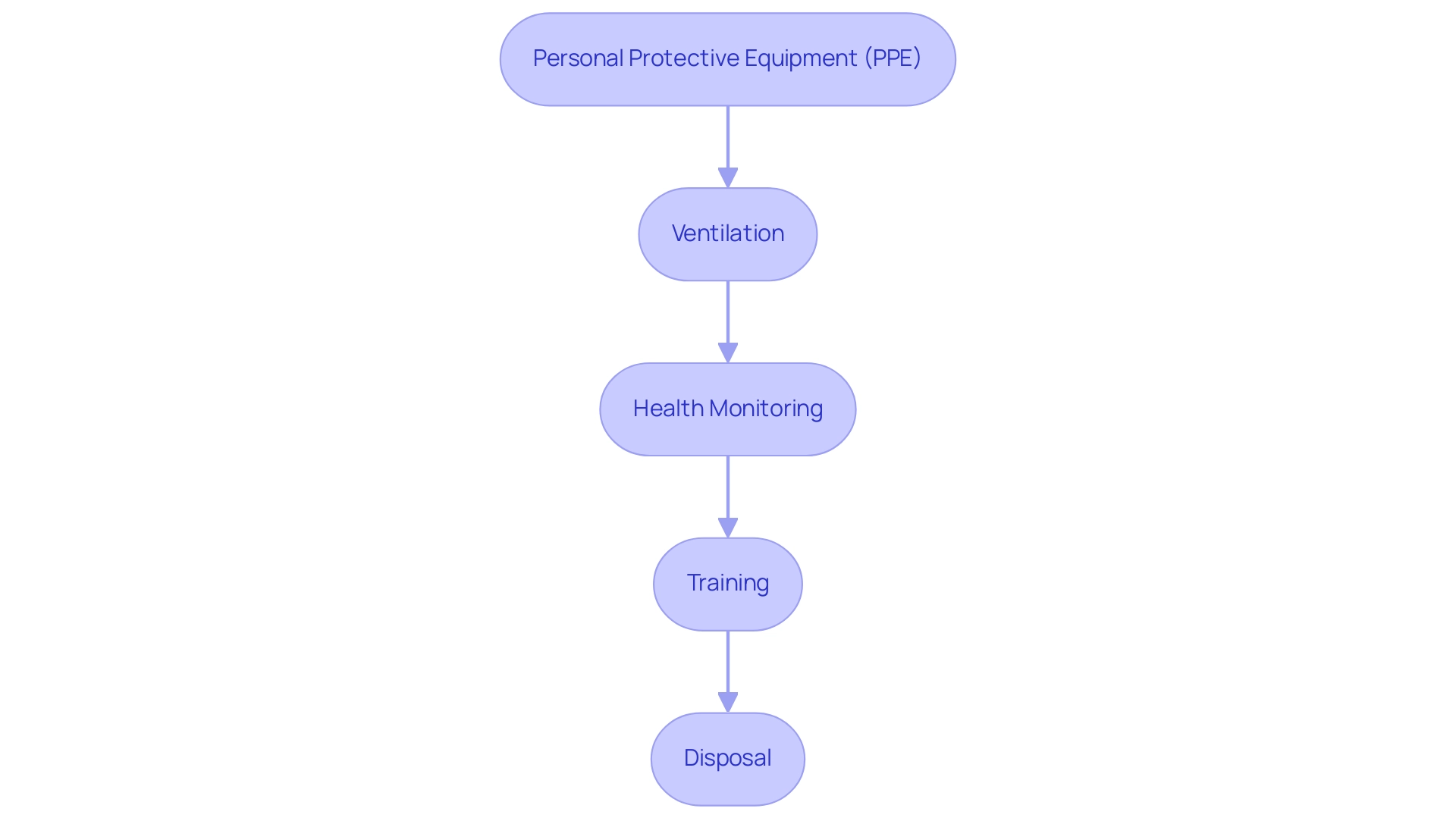
Future Trends in Beryllium Copper Use
As industries keep progressing, the need for sophisticated materials like certain alloys is set for substantial expansion. Key future trends include:
Increased Demand in Electronics: The rise of electric vehicles (EVs) and renewable energy technologies is driving a heightened need for high-performance electrical components made from a specialized metal alloy.
This material’s superior electrical conductivity and thermal resistance make it ideal for applications in EV batteries and charging infrastructure.Innovations in Alloys: Ongoing research is focused on creating new alloy compositions and treatments that improve the characteristics of beryllium-based metal.
These innovations may lead to materials that offer improved performance characteristics, expanding their usability in demanding industrial applications.Recycling and Sustainability: As sustainability becomes a priority across industries, the recycling of this metal alloy will gain traction.
Enhanced recycling processes not only reduce waste but also improve material recovery rates, aligning with global sustainability goals and reducing the environmental impact of mining new materials.Regulatory Changes: Anticipated regulatory changes regarding the handling and usage of the element may significantly influence procurement strategies.
Compliance with evolving regulations will necessitate adjustments in operational practices, emphasizing the need for procurement managers to stay informed and agile.Market Expansion: Emerging markets in Asia and South America are anticipated to enhance global demand for metal alloy products across various sectors, including automotive and aerospace.
The projected growth of the Global IC Test Sockets Market, from USD 1.63 billion in 2023 to USD 2.73 billion by 2032, underscores the expanding opportunities within these regions.
Significantly, major rivals in the alloy market consist of Materion, NGK, ULBA, NBM Metals, and IBC Advanced Alloys, emphasizing the strategic significance of this material in upcoming technological progress.
Pricing and Inventory: For current pricing and inventory details of beryllium metal strips, please contact our customer support team.
Non-Sparking Tools: Additionally, the importance of non-sparking tools in explosive environments cannot be overlooked.
Beryllium copper round bar is often utilized in the manufacturing of non-sparking tools, providing safety and reliability in hazardous conditions.
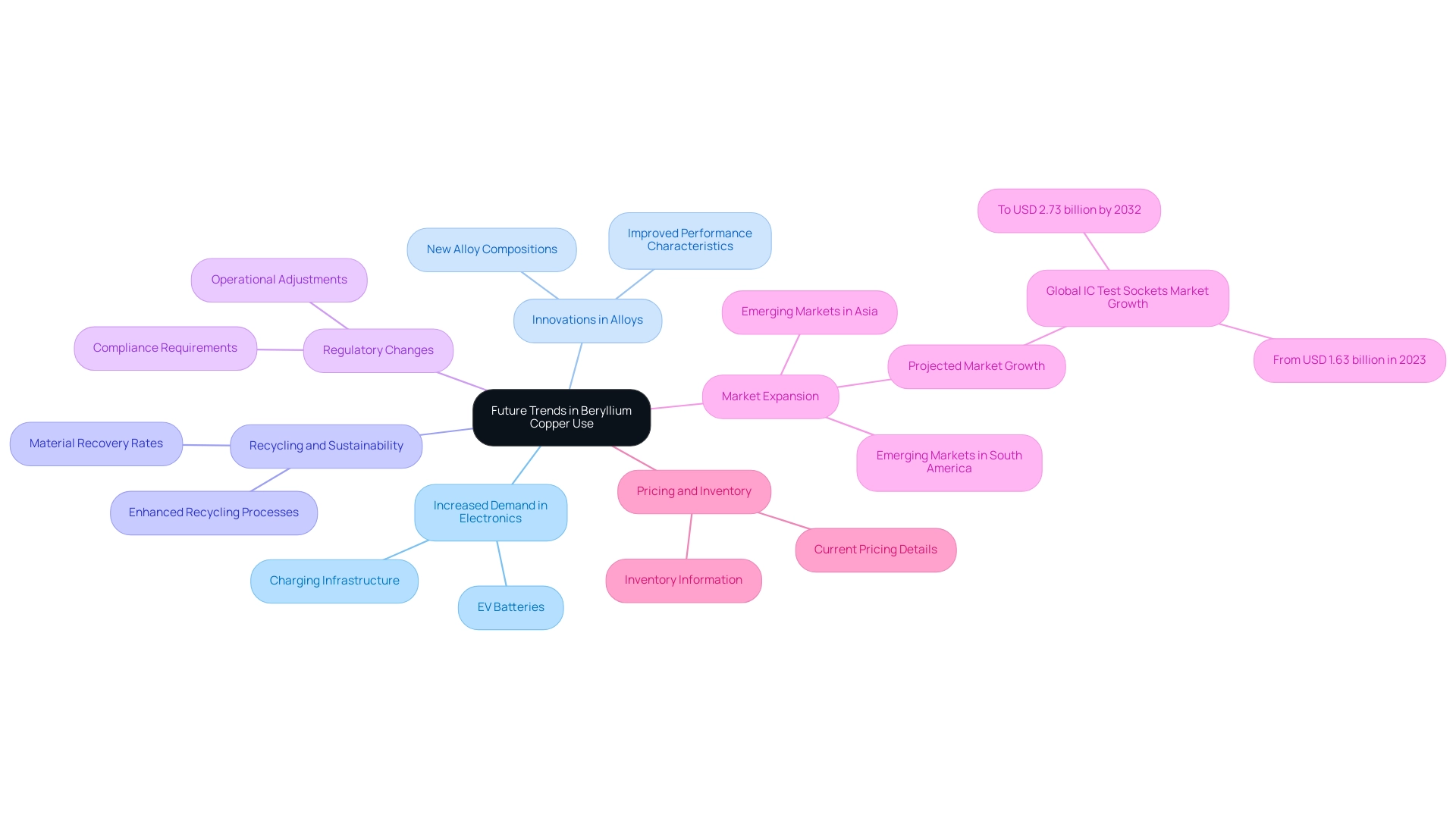
Conclusion
Beryllium copper stands out as a vital material in today’s industrial landscape, offering a unique blend of strength, electrical conductivity, and corrosion resistance. Its impressive properties make it an ideal choice across diverse sectors, including aerospace, automotive, and electronics. The alloy’s ability to withstand extreme conditions while maintaining structural integrity underscores its importance in applications where performance and reliability are paramount.
The growing reliance on beryllium copper is evident in its wide-ranging applications, from electrical connectors to non-sparking tools, showcasing its versatility and critical role in enhancing safety and efficiency. As industries move towards advanced technologies, the demand for beryllium copper is set to increase, driven by innovations in alloy compositions and the rising need for high-performance components in electric vehicles and renewable energy systems.
However, the handling of beryllium copper requires stringent safety measures due to potential health risks. Procurement managers must be vigilant in implementing proper protocols, ensuring that their teams are well-trained and protected. Staying informed about regulatory changes and emerging trends will be essential for making strategic decisions in material sourcing.
In conclusion, beryllium copper is not just a material of choice; it is a cornerstone of modern manufacturing. Its superior performance characteristics and adaptability position it as a key player in shaping the future of technology and industrial applications. Embracing beryllium copper today will pave the way for innovations and advancements that define the industries of tomorrow.

